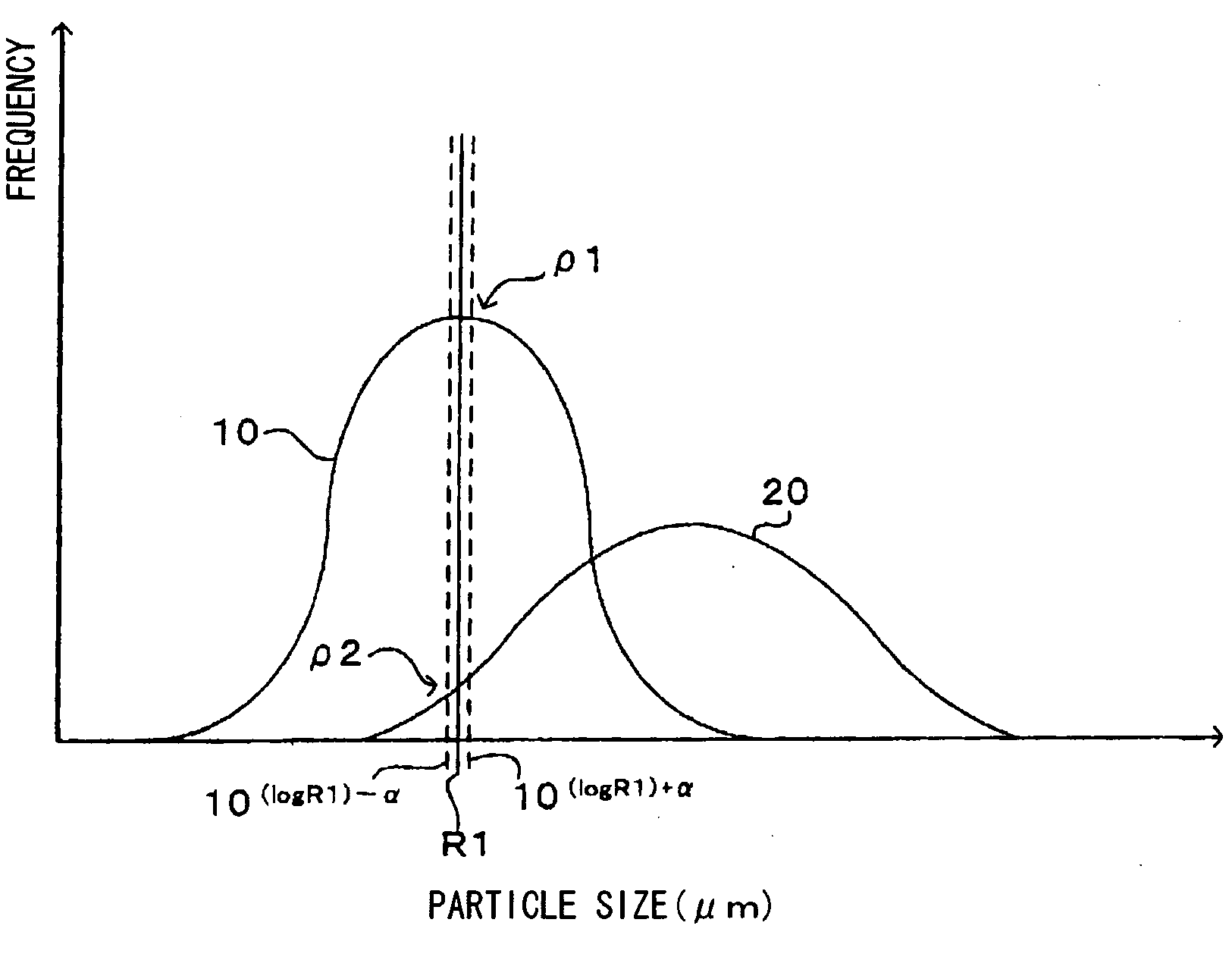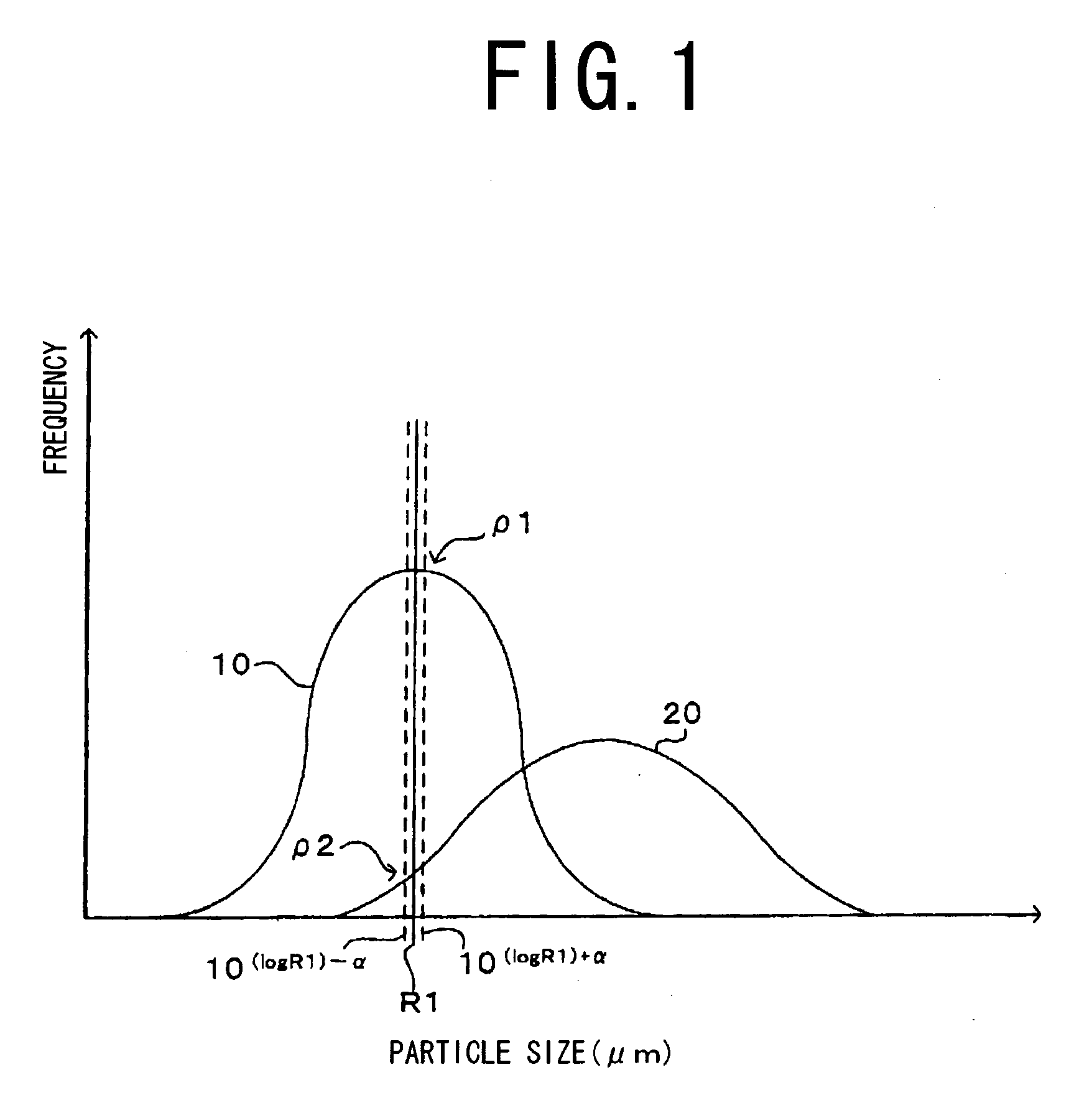Composite Particles for Electrochemical Device Electrode, Method of Production of Composite Particles for Electrochemica Device Electrode, and Electrochemical Device Electrode
a technology of electrochemical device electrode and composite particle, which is applied in the direction of non-metal conductors, cell components, conductors, etc., can solve the problems of difficult to form an active material layer superior in thickness, the formability of the active material layer is not fast enough to keep up with the speed of formation, and the accuracy of thickness is not high enough to achieve the effect of large thickness, superior in thickness, and large thickness
- Summary
- Abstract
- Description
- Claims
- Application Information
AI Technical Summary
Benefits of technology
Problems solved by technology
Method used
Image
Examples
example 1
[0119]In the above first method of production, 50 parts of a conductive material comprised of acetylene black with an average particle size of 0.7 μm (Denka Black powder; made by Denki Kagaku Kogyo), 200 parts of a dispersant comprised of an aqueous solution containing 5% of carboxymethyl cellulose (Serogen 7A; made by Daiichi Kogyo Seiyaku), and 50 parts of water were mixed and dispersed using a planetary mixer to obtain a conductive material dispersion with a solids concentration of 20%. Next, 30 parts of the conductive material dispersion, 8 parts of an aqueous solution containing 5% of carboxymethyl cellulose (Serogen 7A; made by Daiichi Kogyo Seiyaku), 100 parts of an electrode active material comprised of high purity activated carbon powder with a specific surface area of 1,800 m2 / g and a volume average particle size of 5 μm “Kurarecoal YP-17D” (made by Kuraray Chemical), 7.5 parts of a thermoplastic binder comprised of a dispersion of a carboxy-modified styrene-butadiene copo...
example 2
[0121]In the above-mentioned first method of production, 100 parts of an electrode active material comprised of high purity activated carbon powder with a specific surface area of 1,800 m2 / g and a volume average particle size of 5 μm “Kurarecoal YP-17D” (made by Kuraray Chemical), 15 parts of a binder comprised of an aqueous dispersion of a core-shell type polymer latex (volume average particle size 0.31 μm, concentration 40%) with monomer units forming the core part comprised of n-butyl acrylate and ethyl methacrylate, the monomer units forming the shell part comprised of n-butyl methacrylate and methacrylic acid, a ratio of composition of the monomer units being n-butyl acrylate: ethyl methacrylate: n-butyl methacrylate: methacrylic acid=40:40:17:3 (mass ratio), a glass transition temperature of the core part of −5° C., and a glass transition temperature of the shell part of 25° C., 5 parts of a conductive material comprised of acetylene black with an average particle size of 0.7 ...
example 3
[0122]Except for not adjusting the pH of the slurry and for using as the spray dryer “OD-22G” (made by Ohkawara Kakohki) and a rotary disk type pin-type atomizer (diameter 125 mm), the same procedure was followed as in Example 2 to obtain composite particles. The composite particles were used in the same way as in Example 1 to form a sheet-shaped active material layer. The results of the evaluation are shown in Table 1.
PUM
| Property | Measurement | Unit |
|---|---|---|
| volume average particle size | aaaaa | aaaaa |
| particle size | aaaaa | aaaaa |
| specific surface area | aaaaa | aaaaa |
Abstract
Description
Claims
Application Information
 Login to View More
Login to View More - R&D
- Intellectual Property
- Life Sciences
- Materials
- Tech Scout
- Unparalleled Data Quality
- Higher Quality Content
- 60% Fewer Hallucinations
Browse by: Latest US Patents, China's latest patents, Technical Efficacy Thesaurus, Application Domain, Technology Topic, Popular Technical Reports.
© 2025 PatSnap. All rights reserved.Legal|Privacy policy|Modern Slavery Act Transparency Statement|Sitemap|About US| Contact US: help@patsnap.com


